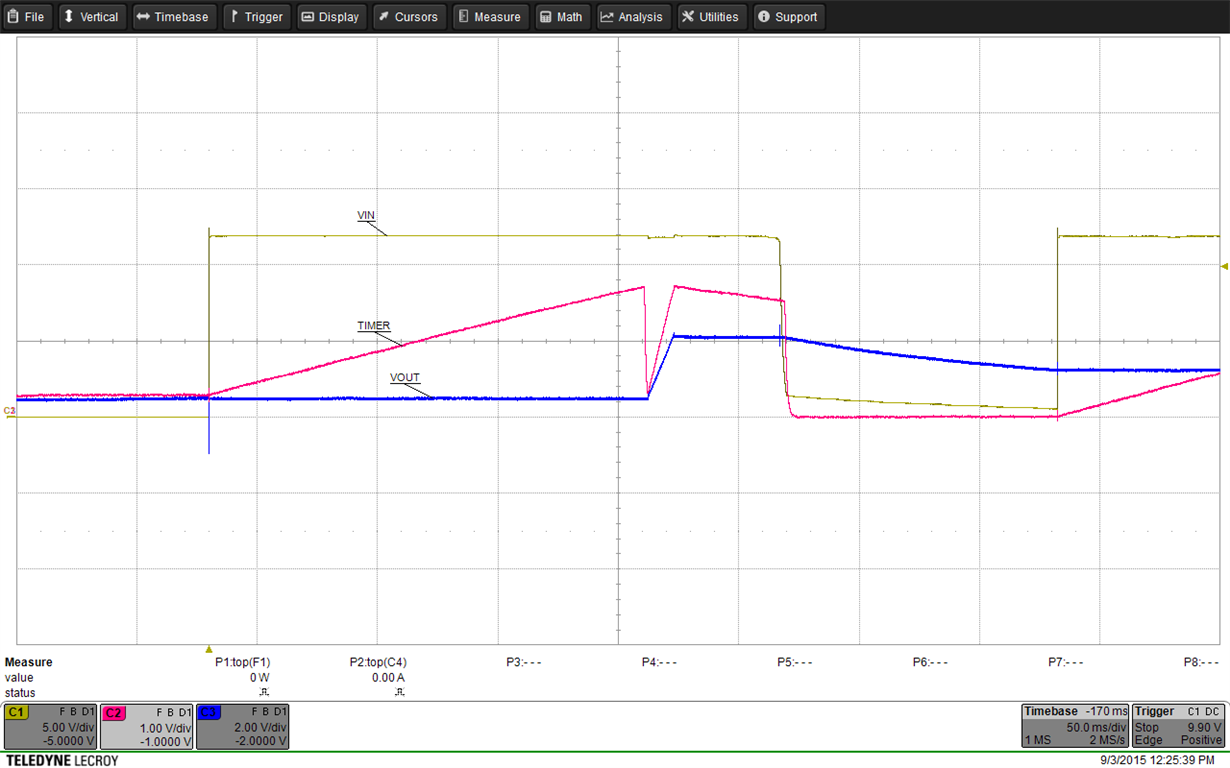If shutdown and power on is done when TIMER pin voltage is not zero, does TIMER pin voltage rise up from that voltage?
For example, it is the condition that Vin off and on is done during t3 period of datasheet Figure 23.
Or does LM25069 wait for TIMER pin voltage fall down to zero and start insertion time?
Best Regards,
Kohei Sasaki




